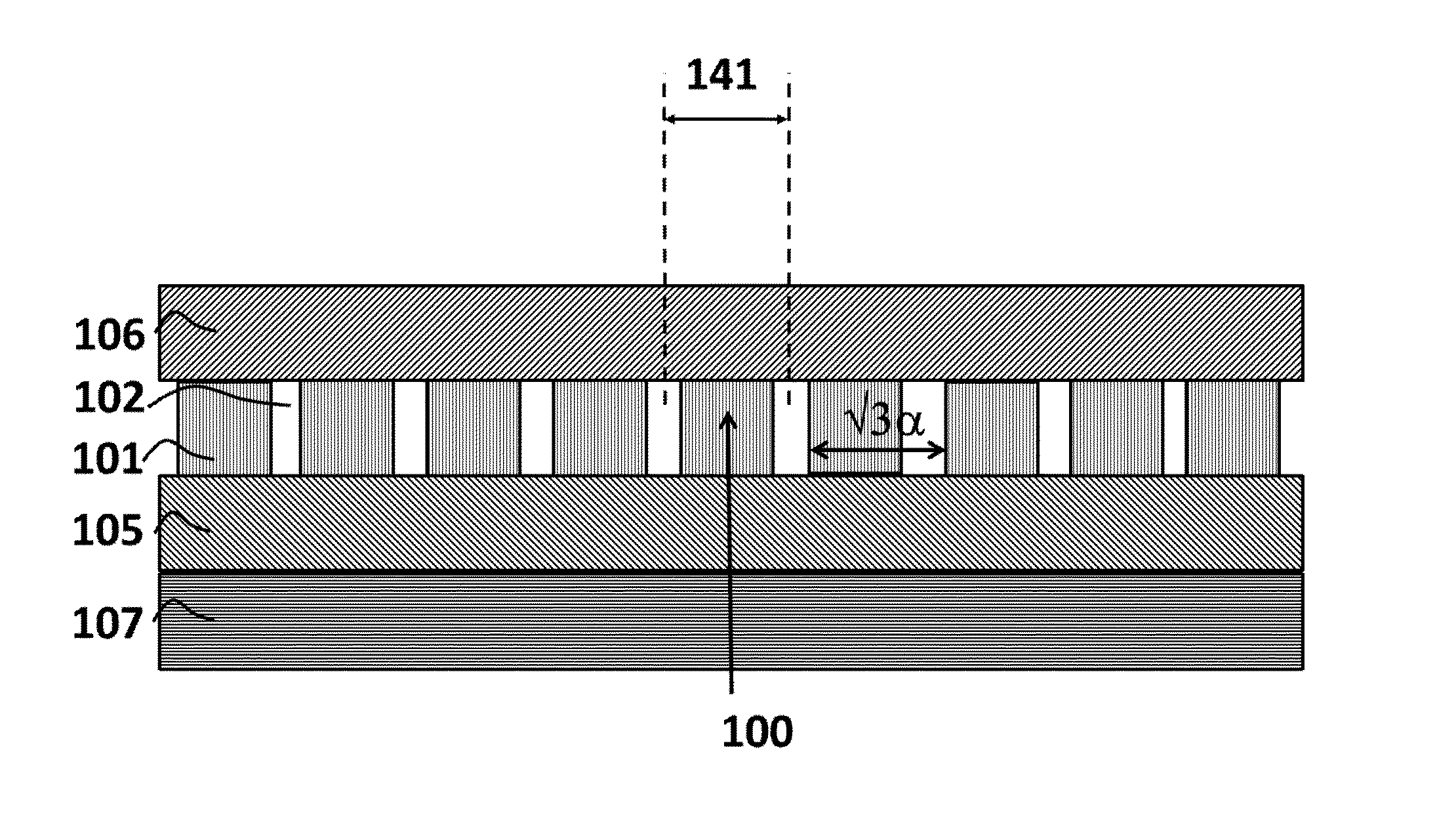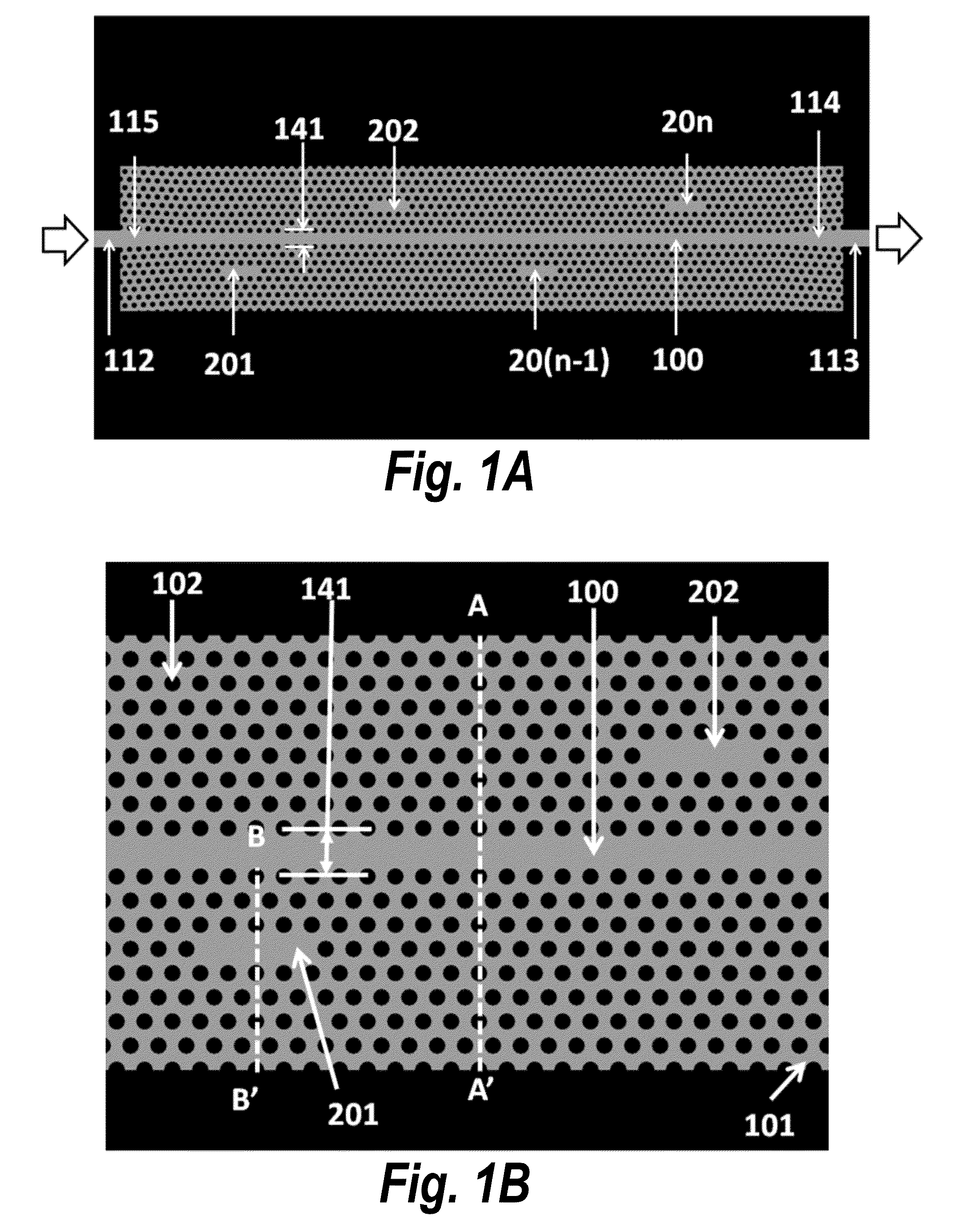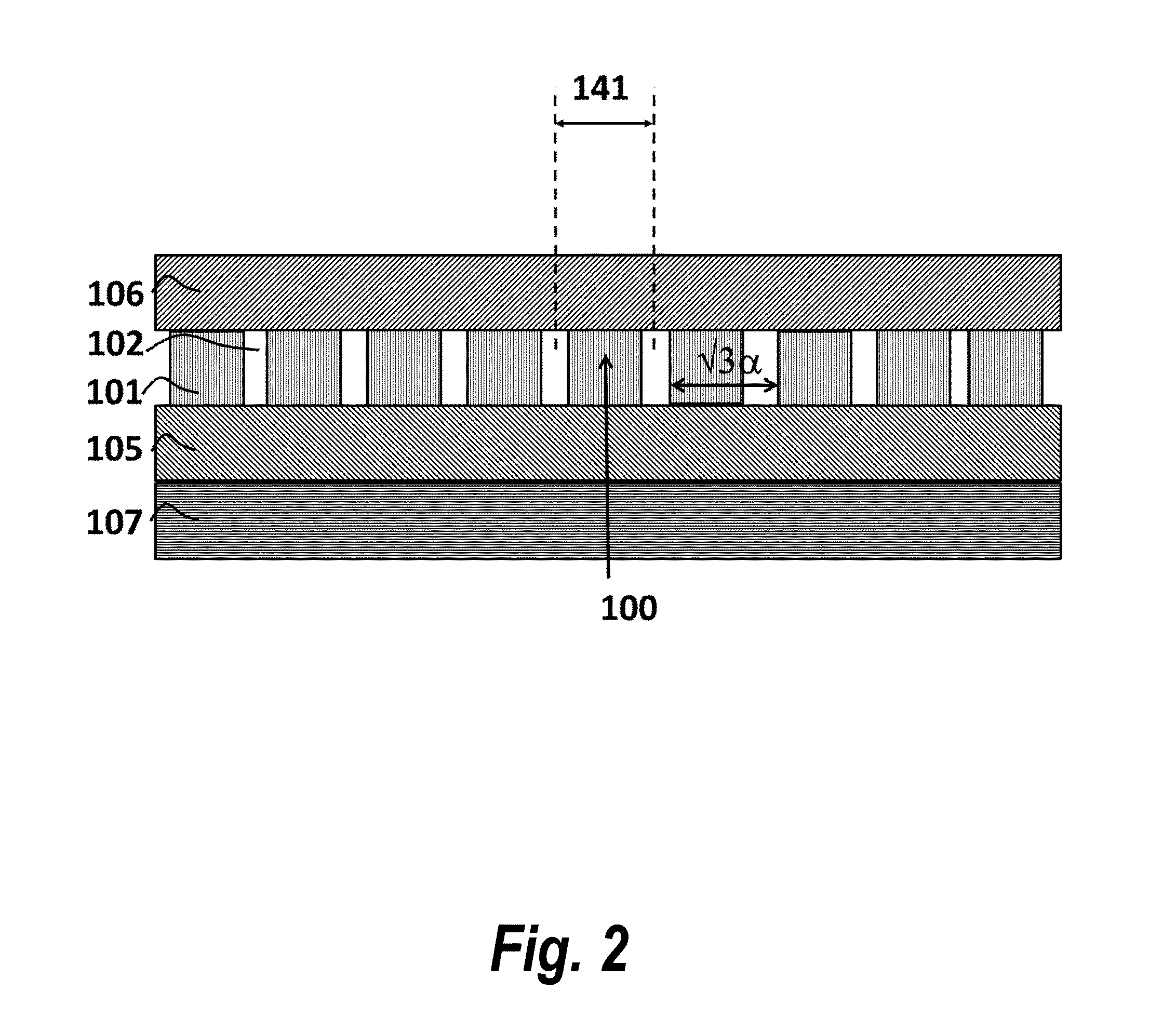Photonic Crystal MicroArray Layouts for Enhanced Sensitivity and Specificity of Label-Free Multiple Analyte Sensing, Biosensing and Diagnostic Assay
a photonic crystal and microarray technology, applied in the field of optical and medical devices, can solve the problems of large sensitivity to changes in the refractive index of the ambient, design is not suitable for the fabrication of microarrays for multiple analyte sensing, and employs microcavities, so as to increase the measurement throughput of the device and enhance the sensitivity
- Summary
- Abstract
- Description
- Claims
- Application Information
AI Technical Summary
Benefits of technology
Problems solved by technology
Method used
Image
Examples
Embodiment Construction
Detailed Description of the Invention
[0030]In accordance with a preferred embodiment of the present invention, a device for a microarray for personalized diagnostic applications comprises: a functional photonic crystal waveguide having a waveguide core along which light is guided, arrays of photonic crystal microcavities along the length of the photonic crystal waveguide each coated with a separate biomolecule specific to disease identification, an input and output photonic crystal waveguide with gradually changed group index before and after the functional photonic crystal waveguide, which can bridge the refractive indices difference between conventional optical waveguides and the functional photonic crystal waveguide. The sensor can be used to detect organic or inorganic substances such as proteins, DNA, RNA, small molecules, nucleic acids, virus, bacteria, cells, and genes, without requiring labels such as fluorescence or radiometry. Light (from a broadband source or LED) coupled...
PUM
 Login to View More
Login to View More Abstract
Description
Claims
Application Information
 Login to View More
Login to View More - R&D
- Intellectual Property
- Life Sciences
- Materials
- Tech Scout
- Unparalleled Data Quality
- Higher Quality Content
- 60% Fewer Hallucinations
Browse by: Latest US Patents, China's latest patents, Technical Efficacy Thesaurus, Application Domain, Technology Topic, Popular Technical Reports.
© 2025 PatSnap. All rights reserved.Legal|Privacy policy|Modern Slavery Act Transparency Statement|Sitemap|About US| Contact US: help@patsnap.com



